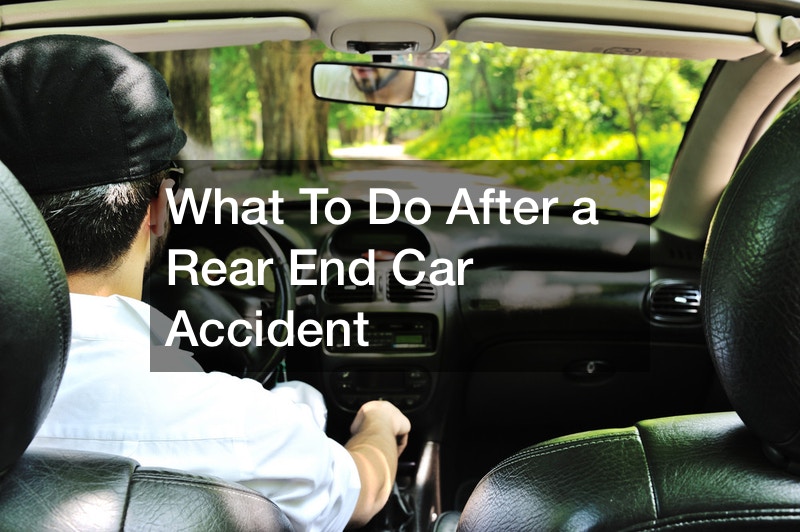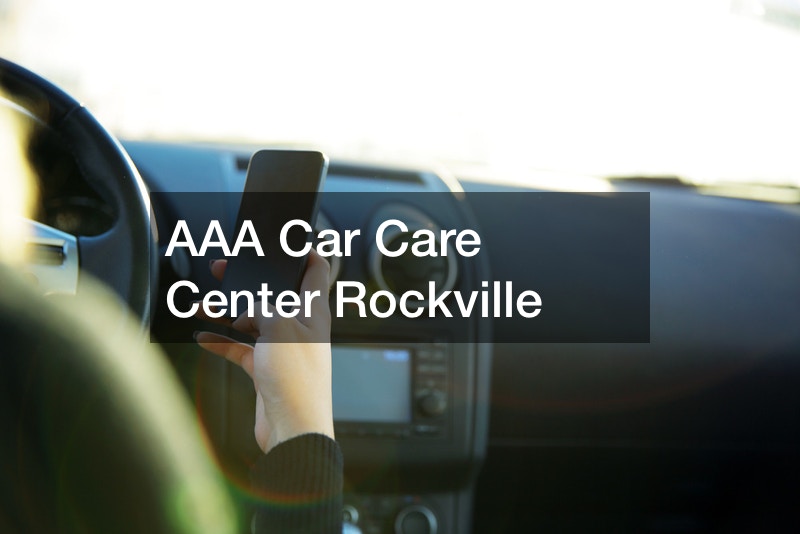
Try as you might, one day you might find yourself stuck on the side of the road. Even after visiting the best auto dealer in town, you still might find yourself in a rear-end car accident. Rear-end accidents are one of the most common types of car accidents that occur. From distracted and drunk driving to driver fatigue and poor weather, rear-end accidents can be scary once they occur. That said, as long as you know how to react, you won’t have to worry about panicking. After all, there are options worth considering when you’re asking yourself what to do after a rear end car accident.
Should you contact an attorney? Get an accurate report of the damage? Simply wait and talk to the police? Is it even worth pursuing a personal injury claim if you’ve been injured in a car accident? These are just a few of the questions that might pop into your mind once you’ve pulled over to the side of the road to assess the damage. In reality, your first steps should be the most obvious, and from there, you only need patience and self-control to manage the aftermath of a car accident. Keep reading so you can be prepared in the event of a rear-end accident that caught you by surprise.
Why Rear-End Crashes Are So Common
When you’re asking yourself what to do after a rear end car accident, you might also be surprised that such an unfortunate incident occurred. However, rear end car accidents are so common because drivers aren’t paying attention to what they’re doing. if you take your eyes away for even a second, you might find the tail-end of the car in front of you too soon. Rear-end crashes take place because drivers need only a split-second delay to not be able to react fast enough, mostly due to some extenuating situation. As a driver, you should know to stay far back enough from the vehicle in front of you that you have time to brake if the driver in front of you brakes too early. Whether you’re at fault or not, there are some right choices you can make following a rear-end collision.

Pull Over and Contact 911
If yo’re thinking of what to do after a rear end car accident, the first thing should be contacting the police. Don’t even think about driving off after an accident, and contact the police to maintain order and control over the scene. The police will eliminate the potential for violence while protecting the scene. In the end, you’ll have an accurate report to use in the ensuing legal proceedings, whether or not you were at fault for the accident or not. Additionally, you won’t have to worry about getting into an argument with a driver who might be belligerent and less patient. There are too many variables that could come up later, many of which could prevent you from winning a personal injury claim or even getting reimbursed on your insurance claim.
That said, as a driver, you should also be prepared for retaliation. Some drivers will attempt to bully you to get you out of your element after a car accident. By pointing fingers and raising their voices, the other driver could get you so upset that you inaccurately report details to the police that could come back to hurt you later. If the other driver is acting aggressively, consider staying in your car until the police arrive. Resist the urge to accept money from a driver who admits he’s responsible. Instead, wait for the safest opportunity to get out of your car and see how bad things are.
Assess Damage and Injuries
You might find that the damage your vehicle sustained isn’t as bad as you thought. You still need to know what to do after a rear end car accident. Look for damage to the fenders to start, then take a closer look at your hood, the front windshield, mirrors, and the rest of the car exterior. Unfortunately, you might not want to stop there as rear end car accidents can cause misalignment, which you’ll later notice when your vehicle begins pulling to one side. Additionally, you’ll want to make a mental note to see if the check engine light switches on by the time the incident is resolved. Either of these circumstances will indicate a need to visit an auto repair shop to get your vehicle checked out.
Not only that, you might have suffered some injuries during the crash. The most common injury you’ll face is whiplash, as your neck will jerk uncontrollably in one direction or the other during the collision. With whiplash, you might notice some loss of movement, stiffness in your neck, and unfortunately, some pain that could linger for up to three weeks. Aside from whiplash, you could suffer cuts and bruises, even fractures and broken bones, and therefore, you should request immediate medical attention. Depending on the nature of your injuries and the skill level of an auto accident attorney or injury lawyer, you might be able to seek financial compensation at a later date. For now, the most important thing is your safety. For that reason, you might even want to go to the hospital to get further examination if the paramedics at the scene suggest you should.

Obtain the Driver’s Contact and Insurance Information
Auto insurance is the solution to protect you in the event of an accident. So if you’re trying to figure out what to do after a rear end car accident, you should make sure you’re getting the pertinent information from the other driver. For your auto insurance company to reimburse you on your claim, they’ll need as much information from you about the crash and the driver as possible. Here, you can see the importance of having contacted the police. Whether the accident is your responsibility or the other driver’s, you will want their identifying information as well as details about the make and model of their vehicle. Finally, you need to obtain the contact information of the other driver’s insurance company. Better to be on the safe side and obtain as much information as possible than risk having missing details later that could prolong an investigation.
Consider Catching a Ride
Did you determine how significant the damage is from the crash? Minor fender damage might warrant a drive-off as long as you don’t experience a severe injury. But major damage to your vehicle’s exterior, or worse, damage to the engine and wheels, means you need to reach out to a towing service to have your car safely transported to a repair shop. Catching a cab or ride from a relative might be a hassle, but it’s safer than driving off without repairs. Worst-case scenario, the minor damage gets worse and subjects you to a much more severe accident down the road. The resulting damage from the second crash could cost you even more while putting you at greater risk.

Obtain Long-Term Medical Attention as Needed
Neck and back injuries are common, as are broken bones and fractures in severe rear end accidents. These injuries could leave you struggling to walk and feeling constant pain, both problems which will make you unable to work as efficiently. In some cases, you might need ongoing rehabilitation to get your body moving again without pain. And if you’re the person who rear ended in a crash, it’s also not uncommon to suffer facial injuries in the event that the airbag was deployed. Any injury, whether small or major, might require a long-term financial obligation to meet pressing medical needs, so when you’re thinking of what to do after a rear end car accident. A car accident attorney won’t have much of an impact on your immediate physical limitations. Still, you’ll need to keep all of your medical bills, as well as any details regarding medical procedures. The medical information you keep will keep you focused on the expenses you have to pay. And those expenses will motivate you to get car accident help by contacting a personal injury law firm or car accident attorney.
Contact an Attorney
Whether you were injured or your vehicle sustained damage, an attorney can help you, especially if you’re at fault for the crash. The unfortunate scenario of being at fault might occur if you’ve been drinking, so a DUI lawyer, in particular, would be worth contacting if you’re worried about getting into trouble. Asking what to do after a rear end car accident is another way of asking, “What would your attorney do after a rear end accident?” The reason is that depending on the nature of the crash, your driving habits, and your level of impairment, you could find yourself facing severe punishment if you’re at fault due to distracted, drunken, or reckless driving. So, whether you’ve made your way home or had to sit in a cell, your attorney needs some information to protect you. Especially if you’re the one responsible for a rear end collision.

Assess Your Own Driving for Improvement
What to do after a rear end car accident if you’re not at fault but worry you might be? Even if you’re not at fault, you might spend some time thinking about your driving record. That’s because your prior driving history is a clear indicator of whether or not you need to make adjustments to the way you drive. Whether you’re engaged in distracting activities or acting too impulsively on the road, improper driving techniques can increase your chances of getting in an accident. Mentally, you shouldn’t need more than a couple of minutes to reflect on the way you’re driving and determine if you’re distracted, upset, or bending the rules when you shouldn’t. What many drivers fail to understand is that accidents happen when drivers assume greater risks. So, if you’re driving over the speed limit, over-aggressively, or getting into the habit of not paying attention, now is the best time to reflect on your behavior on the road. Sometimes, an accident can be a sign you need to make adjustments to the way you drive.
Wait Until Your Car is Restored Before Driving
Even though you’ve experienced a car accident, you’re eager to get your car back on the road. That’s because you’ve followed the other steps and now, you realize you still need to get to work and transport friends and family. So, what should you do after a rear end car accident when you need to drive right away? There are plenty of answers, from relying on others for a while to making sure those who need you have other transportation opportunities before them. Even public transportation, such as buses and public train systems, are better alternatives than driving a vehicle right away after it’s been damaged in a rear end accident. The important thing to remember is that just because you managed to get it home successfully doesn’t mean it’s safe to drive again. Remember the earlier tip, the one about choosing to get a ride following the crash? Then you’ll know you were fortunate enough to bring your damaged vehicle home. Still, letting your car repairman do everything that’s needed should be your priority,
Now you have answers about what to do after a rear end car accident. Going forward, you won’t be tempted to leave the scene without calling the police, a mistake many people make every day. You’ll have a full report of the crash, the damage to your vehicle and other drivers, as well as a self-assessment you did on yourself regarding any potential injuries. From the moment you got all the information you needed, you were prepared, as now your attorneys and the insurance company will have what they need to make a decision regarding a future claim.
Remember, rear end accidents are all too common. Unfortunately, you can get rear ended or rear someone else because of driver fatigue and poor weather. If you haven’t taken the time to contact an attorney, now is the time to do so. If you’re wondering what to do after a rear end car accident, just ask yourself if you’d rather be stuck paying for medical expenses that occur in the future. The problem with car accidents is that people make the wrong decisions afterward. Now, that’s not a mistake you have to make.



